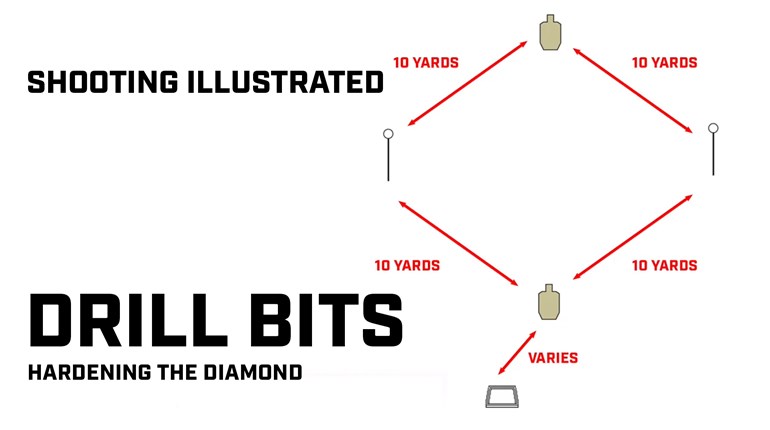
In reality, rifle marksmanship is really a simple endeavor; just line up the sights and press the trigger without disturbing them. We don’t have to devise new exercises to get better at rifle shooting or to measure our ability. Good ones have been around for a long time.
Gunsite Academy founder Jeff Cooper considered Stewart Edward White a “certified master of the art” of rifle marksmanship. White was an early 1900s American novelist and adventurer. His shooting talents were analyzed by E. C. Crossman, a man Cooper considered one of the half-dozen truly authoritative “gun writers.” Crossman found White knew practically nothing about the theory of rifle shooting, and he did not shoot small groups. What White could do was keep all of his shots in a four-inch ring at a hundred steps, under all conditions of light, speed and position.
In Townsend Whelen’s 1923 book, "The American Rifle," I discovered a hidden gem. There, Whelen outlined White’s system of rapid-fire rifle practice. It’s an interesting approach to rifle training and includes an even more interesting scoring system.

To try it, you’ll need to set up an ordinary military 200-yard rifle target A at 100 yards. This target had a center black bull measuring eight inches, surrounded by a 26-inch ring and a 46-inch ring. Starting with the rifle buttstock below the elbow, on signal the shooter fires one timed shot. This is repeated four times for a total of five shots. Then, individual times for each shot are added up, and the target is scored based on the following table:

Scoring: Find the total time for all shots in the left (TIME) column. The actual time must not exceed the number in the chart. Then apply the points for each shot fired, based on the values given for each zone.
The first time I tried this drill, I used my Brockman custom Scout Rifle and managed five shots in 9.87 seconds. I had two hits in the 8-inch ring and three in the 26-inch ring. My score was 15+15+10+10+10 (60.) My 16-year-old son ran the drill and was more accurate but slower. At 16.6 seconds, he was scored on the 17-second line with 8+8+8+5+5 (34.)
The key to a good score is the balance of speed and accuracy and this drill and training concept very likely laid the foundation for Jeff Cooper’s emphasis on, and infatuation with, the “snap shot.” What I really like about using this drill as a training tool is that it gives you no credit for near misses; you have to get inside that eight-inch circle to score well.
I also like the importance of time because, with any application of the rifle when solving real-world problems, time will always be a part of the equation. It’s worth noting that, on the signal, you could assume any intermediate position you choose. Doing so might allow better hits but you’ll be penalized heavily on the time scale.

Given that the military target A went out of style years ago, and given that if you cannot keep your shots within a 26 inch circle at 100 yards what you really need is basic rifle training, as a modern tactical alternative I suggest a common cardboard IDPA or IPSC target. Place an eight-inch Shoot-N-C peel and stick target in the high chest area for the A-zone. The remaining target makes up about the same surface area as the 26-inch circle B-zone of the A target. Disregard the C zone; a shot off target is fully deserving of being described as a miss.
You could also use this drill as a qualification course. White suggested any man should be able to score about 20 points in 18 or more seconds. By that estimation we could assume twice as many points (40) should qualify one as a marksman. 55 as sharpshooter, 65 as expert, and a perfect score of 75 would earn a distinguished rating.
I believe the system has significant practical appeal. For one, the firearm system is irrelevant; you can conduct the drill with an AR, a pistol caliber carbine, conventional sporting rifle, Scout Rifle, or even a .22. Secondly, this is a shoot-on-your-hind-legs-like-a-man kind of test. It’s a genuine assessment of a shooter’s ability to get good, fast hits. Most real riflemen know that’s usually what it all comes down to anyway.




































